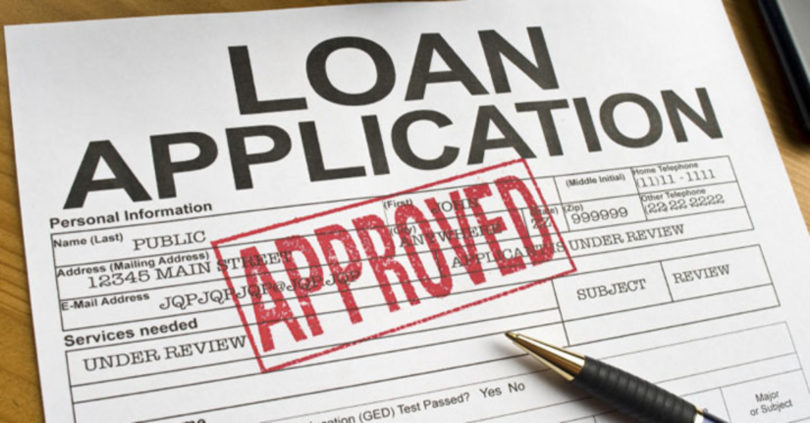Pre Approval Student Loans: What You Required to Know Before Applying
Pre Approval Student Loans: What You Required to Know Before Applying
Blog Article
Comprehending the Impact of Rates Of Interest on Home Loans for First-Time Buyers
Navigating the labyrinth of home finances can be intimidating for novice customers, specifically when passion rates play a pivotal function in shaping their financial journey. The selection between set and adjustable-rate home mortgages lugs considerable repercussions, impacting monthly spending plans and lasting financial security. As passion prices rise and fall with economic shifts, understanding their determination comes to be important.
Exactly How Rates Of Interest Are Identified
Rate of interest on mortgage are figured out by a complex interplay of economic elements and policies. The main motorist is the monetary plan set by main banks, such as the Federal Book in the United States, which readjusts the government funds rate to affect economic activity. When the reserve bank increases this price, borrowing comes to be much more pricey, commonly resulting in increased home financing rates of interest. Conversely, lowering the federal funds rate can make borrowing cheaper, potentially minimizing mortgage rates.
Another significant aspect is rising cost of living. Higher rising cost of living generally causes greater rate of interest as lending institutions require even more go back to balance out the reducing buying power of future payments. Financial development likewise plays a critical function; in durations of durable financial efficiency, need for credit report increases, which can drive up rate of interest.
Additionally, the bond market significantly affects mortgage rates. Long-lasting rate of interest prices, consisting of those for mortgage, are closely tied to returns on federal government bonds. As bond yields climb, so do home loan prices, reflecting the boosted cost of long-term loaning.

Kinds Of Rates Of Interest
Recognizing the numerous kinds of rates of interest is indispensable to understanding how home lendings operate. There are largely 2 categories of rate of interest that consumers encounter: fixed and variable. A set rate of interest rate remains constant throughout the regard to the car loan. This provides predictability in regular monthly repayments, offering debtors with stability and simplicity in budgeting. It is especially advantageous in settings where future rates of interest boosts are anticipated.
On the other hand, a variable interest price, also referred to as a flexible rate, rises and fall gradually, commonly in action to changes in a defined criteria or index. These rates commonly begin less than fixed prices, which can be eye-catching to novice customers. They involve the risk of raising over time, potentially resulting in higher total prices if market prices rise. pre approval student loans.
Additionally, some lenders offer hybrid interest rates, incorporating elements of both taken care of and variable rates. An initial duration with a fixed price may be followed by a variable rate. Comprehending these distinctions is vital for customers to make informed decisions that align with their economic circumstances and take the chance of resistance, as each kind presents distinct benefits and prospective disadvantages.

Impact on Month-to-month Payments
Month-to-month repayments on home mortgage are straight influenced by the kind of rates of interest selected, which can substantially impact a customer's economic planning. Fixed-rate mortgages use stability, as the rate of interest stays unchanged over the lending's term, guaranteeing that regular monthly payments continue to be continuous. This predictability help in budget planning, offering a clear financial image over the loan's period. Alternatively, variable-rate mortgages (ARMs) at first existing reduced rate of interest, which can cause smaller sized first repayments. These prices are subject to changes based on market problems after the first set period, possibly raising monthly responsibilities.
Fixed-rate financings shield versus market volatility, providing tranquility of mind however commonly at a greater first rate contrasted to ARMs. On the other hand, ARMs could suit purchasers anticipating revenue growth or those planning to offer prior to the rate change happens, enabling them to exploit on reduced payments.
Long-term Financial Effects
The option of rate of interest type for a home mortgage prolongs beyond prompt month-to-month settlements, bring considerable lasting economic ramifications. A fixed-rate home loan, for instance, uses stability by securing rate of home interest for the duration of the car loan term, safeguarding customers from future rate boosts. This predictability can help in long-lasting economic planning, permitting home owners to forecast expenses without the danger of increasing settlements. If market prices fall, borrowers with a fixed-rate mortgage may miss out on out on prospective savings unless they refinance.
Conversely, an adjustable-rate mortgage (ARM) normally begins with a lower rates of interest, which can result in lower preliminary settlements. Over time, nonetheless, the rate can fluctuate based on market problems, potentially resulting in greater settlements. This irregularity presents a component of unpredictability, which could affect monetary security if prices enhance dramatically.

Techniques for Taking Care Of Prices
Browsing rate of interest prices on home finances look at this now needs critical preparation to enhance monetary end results. Newbie homebuyers need to consider locking in interest prices when they are positive, as this can secure them from prospective price walkings before their financing closing.
One more approach entails picking the right funding kind. Fixed-rate home loans use stability, safeguarding consumers from future price rises, while variable-rate mortgages (ARMs) may use reduced first rates with the risk of future modifications. Customers ought to carefully assess their monetary scenario and risk tolerance when choosing between these alternatives (pre approval student loans).
Finally, maintaining a strong debt profile is critical. A higher credit report can considerably enhance negotiation power for much more positive rate of interest. Frequently reviewing credit report reports, dealing with errors, and decreasing arrearage can improve general creditworthiness, consequently positioning buyers to protect the most useful prices available.
Conclusion
An extensive understanding of passion prices on home financings is a knockout post crucial for novice buyers to make educated choices. Strategic management of interest prices can dramatically affect homeownership success and financial well-being.
When the main financial institution raises this rate, obtaining ends up being more costly, commonly leading to increased home car loan interest rates.In comparison, a variable rate of interest price, also recognized as a flexible rate, varies over time, normally in feedback to changes in a defined standard or index.In addition, some lenders offer hybrid rate of interest prices, incorporating aspects of both dealt with and variable prices - pre approval student loans. A fixed-rate home mortgage, for instance, uses stability by locking in rate of interest prices for the duration of the car loan term, safeguarding consumers from future rate increases. Novice homebuyers must take into consideration locking in interest prices when they are desirable, as this can secure them from possible price walks before their financing closing
Report this page